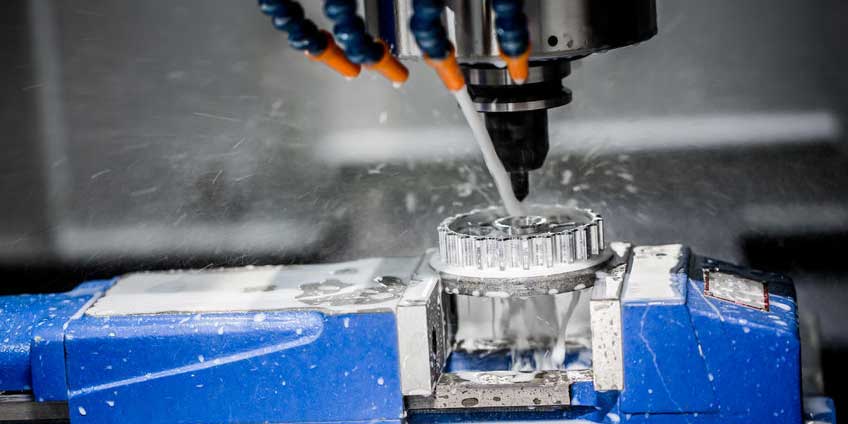Water is important in many aerospace industry processes, including in the use of robotic waterjet cutting.
The aerospace industry, like all water-intensive industries, is moving toward water efficiency in the face of growing global water scarcity. The industry relies on water for a wide range of uses, such as fabrication processes, component washing, production-line cooling, and robotic waterjet cutting.
The quality of water required in the industry also covers a wide range, from ultrapure deionized water on one end of the spectrum to irrigation-quality treated wastewater effluent on the other. Downstream, the aerospace industry is also applying new technologies to clean up its wastewater discharges.
Environmental Contamination
The industry hasn’t always been as conscious. Los Angeles has been unable to use a massive groundwater basin in the San Fernando Valley due to aerospace industry contamination dating back decades. With awareness of the legal snarls associated with Los Angeles’ problems, the industry is now moving to avoid the wasteful and polluting practices common in the 1940s and 1950s with cleaner technology and with a heightened awareness of sustainability practices.
For instance, companies now use food grade citric acid for citric passivation in their rinse water instead of the legacy process, which used hydrochloric and nitric acids. The result is money saved on water and energy, as well as a large cut in acidic air emissions.
Closed-Loop Systems
Closed-loop pressure washers for washing parts are supplanting older systems, with a nearly fifteenfold increase in water efficiency. Such systems even incorporate oil-eating bacteria as part of the cleaning process.
The water used in a closed-loop washing system eventually reaches the point where it can’t be used any longer, but it can then be piped to an in-house wastewater treatment system. Coolant disposal costs can also be eliminated by treating used coolant on-site. A central water treatment system used not just for production processes, but for every application on an aerospace manufacturer’s campus, can increase efficiency.
On the cleaning line, paint-stripper reuse systems are proving themselves as well. Stripping chemicals are recirculated within the system to extend chemical life, and an automated slushing system increases speed. These systems can help aerospace manufacturers cut wastewater disposal costs, chemical waste, tank emissions, as well as exhaust system emissions.
Closed-loop systems have also been used to save energy. For example, consistently high atmospheric temperatures and constant exposure to wind-blown sand reduced the efficiency of the cooling tower at an aerospace manufacturer in Ontario, California. It replaced its cooling tower and chiller with a 34-ton closed-loop system for cooling the six injection molding machines in its Class 100,000 cleanroom. Since then there has been a 60% reduction in energy bills for process cooling and a 90% reduction in chemical and water use.
Wastewater Reuse
Rather than treating its wastewater on-site, a manufacturer of carbon friction material for aircraft brakes has opted to let a nearby municipal water system treat its wastewater. The municipal system then pipes the water directly back to the production facility for reuse in a closed loop that doesn’t connect with the city’s drinking water supply at all. The manufacturer cut water use by 62% during a period when it tripled its business, saving an estimated 35 million gallons of water.
In another sustainability effort, an aerospace manufacturer is providing waste carbon fiber to Washington State University to create a stronger permeable pavement that prevents stormwater runoff and helps recharge aquifers in urban areas. Its partnerships with the Nature Conservancy and funding of community water projects evidences a growing awareness in the company and the industry at large that of water issues and their wider effects.

